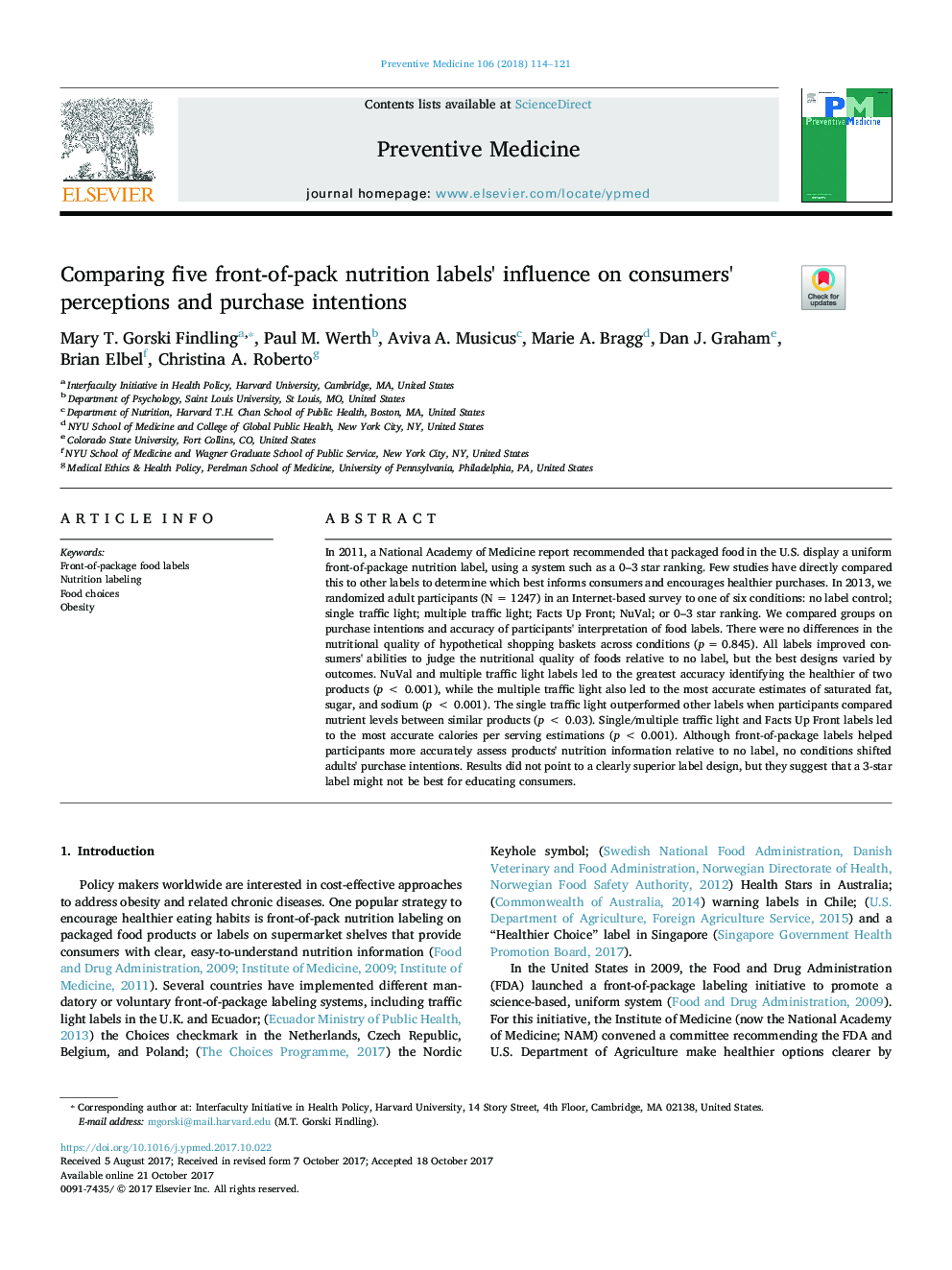| کد مقاله | کد نشریه | سال انتشار | مقاله انگلیسی | نسخه تمام متن |
|---|---|---|---|---|
| 8693695 | 1581606 | 2018 | 8 صفحه PDF | دانلود رایگان |
عنوان انگلیسی مقاله ISI
Comparing five front-of-pack nutrition labels' influence on consumers' perceptions and purchase intentions
ترجمه فارسی عنوان
مقایسه تأثیر پنج جلد تغذیه جلوه ای در ادراک مصرف کنندگان و اهداف خرید
دانلود مقاله + سفارش ترجمه
دانلود مقاله ISI انگلیسی
رایگان برای ایرانیان
کلمات کلیدی
مواد غذایی برچسب جلو برچسب زدن تغذیه، انتخاب غذا، چاقی،
موضوعات مرتبط
علوم پزشکی و سلامت
پزشکی و دندانپزشکی
طب مکمل و جایگزین
چکیده انگلیسی
In 2011, a National Academy of Medicine report recommended that packaged food in the U.S. display a uniform front-of-package nutrition label, using a system such as a 0-3 star ranking. Few studies have directly compared this to other labels to determine which best informs consumers and encourages healthier purchases. In 2013, we randomized adult participants (N = 1247) in an Internet-based survey to one of six conditions: no label control; single traffic light; multiple traffic light; Facts Up Front; NuVal; or 0-3 star ranking. We compared groups on purchase intentions and accuracy of participants' interpretation of food labels. There were no differences in the nutritional quality of hypothetical shopping baskets across conditions (p = 0.845). All labels improved consumers' abilities to judge the nutritional quality of foods relative to no label, but the best designs varied by outcomes. NuVal and multiple traffic light labels led to the greatest accuracy identifying the healthier of two products (p < 0.001), while the multiple traffic light also led to the most accurate estimates of saturated fat, sugar, and sodium (p < 0.001). The single traffic light outperformed other labels when participants compared nutrient levels between similar products (p < 0.03). Single/multiple traffic light and Facts Up Front labels led to the most accurate calories per serving estimations (p < 0.001). Although front-of-package labels helped participants more accurately assess products' nutrition information relative to no label, no conditions shifted adults' purchase intentions. Results did not point to a clearly superior label design, but they suggest that a 3-star label might not be best for educating consumers.
ناشر
Database: Elsevier - ScienceDirect (ساینس دایرکت)
Journal: Preventive Medicine - Volume 106, January 2018, Pages 114-121
Journal: Preventive Medicine - Volume 106, January 2018, Pages 114-121
نویسندگان
Mary T. Gorski Findling, Paul M. Werth, Aviva A. Musicus, Marie A. Bragg, Dan J. Graham, Brian Elbel, Christina A. Roberto,
